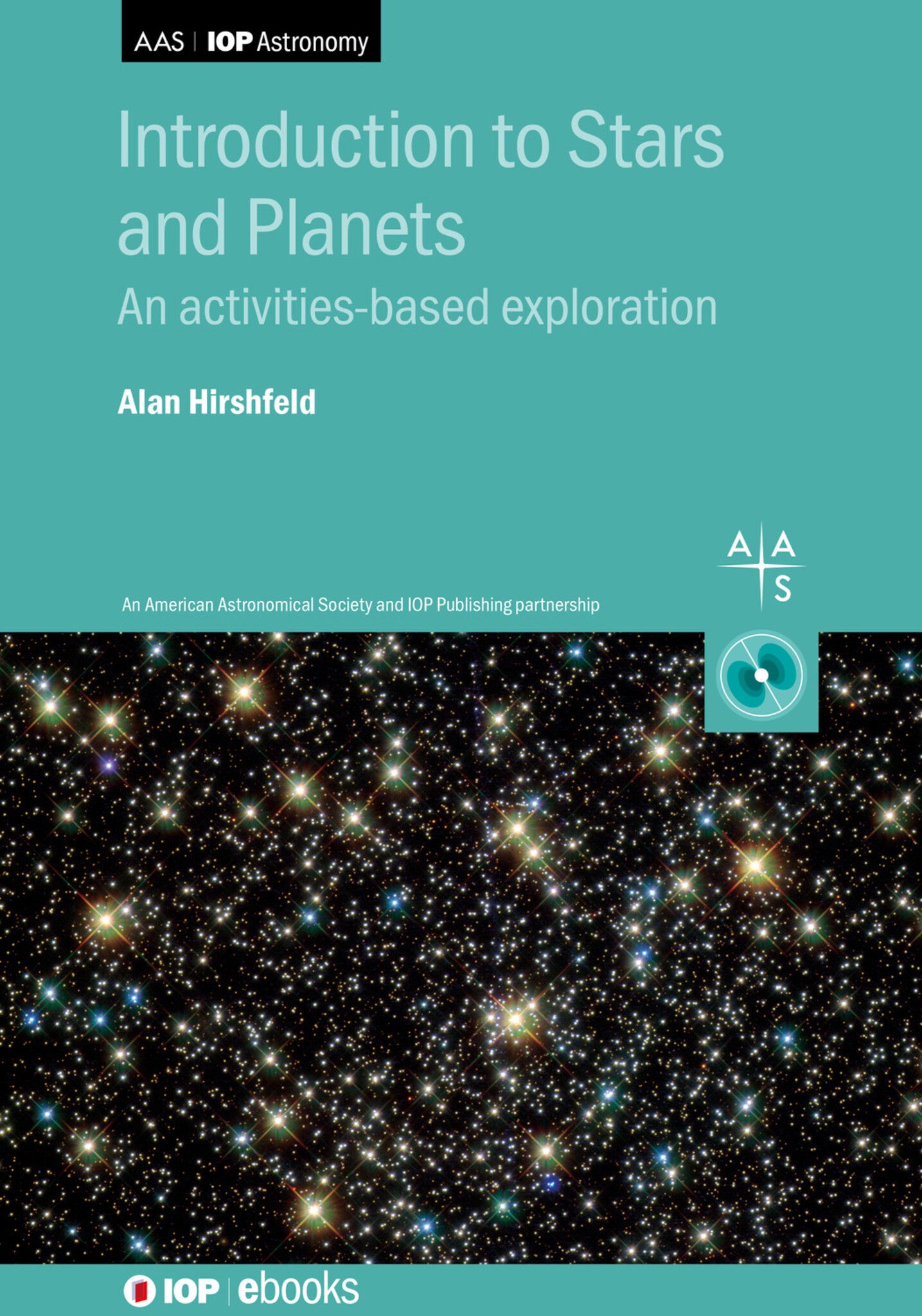We're sorry. An error has occurred
Please cancel or retry.
Introduction to Stars and Planets

Some error occured while loading the Quick View. Please close the Quick View and try reloading the page.
Couldn't load pickup availability
- Format:
-
21 December 2020

How do astronomers know what they know about the stars and planets? That is the question behind today’s rapid pace of cosmic discovery, for every new finding rests upon a centuries-long foundation of astronomical practice. Introduction to Stars and Planets: An activities-based exploration reveals the methods by which Earthbound observers have deduced the physical attributes of celestial bodies, whether situated within our solar neighborhood or at the far ends of the galaxy. The book’s 28 mildly mathematical activities invite readers to carry out the essential work of the astronomer by utilizing real observational data sets and high-quality celestial photographs to establish the innate properties of a range of cosmic systems. Taken in sequence, these activities illustrate the epic advancement of stellar and planetary astronomy over the past century, up to the present day.
Key Features
- Wide-ranging topical coverage of both historical and up-to-the-minute aspects of astronomical discovery
- Uses a learning-by-doing approach
- Structured, goal-oriented framework centered on the methods and physical principles by which astronomers study the universe
- Provides real-time educational feedback to students
- Introduces elementary mathematics for students to gain a truer sense of the work astronomers do
An excellent primer for early-years undergraduates, this book contains a large number of short chapters on the Sun, stars, and planets, each followed by a number of exercises in the form of worksheets for the student. It could reasonably be used by individual students (especially in the current covid crisis) or by teachers to supplement their lessons.
The Observatory, Vol. 141 2021 June

SCIENCE / Space Science / Astronomy, Galaxies and stars, SCIENCE / Physics / Astrophysics, Solar system: the Sun and planets

An excellent primer for early-years undergraduates, this book contains a large number of short chapters on the Sun, stars, and planets, each followed by a number of exercises in the form of worksheets for the student. It could reasonably be used by individual students (especially in the current covid crisis) or by teachers to supplement their lessons.
The Observatory, Vol. 141 2021 June
Preface
Author Biography
Part I: The Sun 1. The Sun’s Distance I: the Method of Aristarchus 2. The Sun’s Distance II: Transits and Radar-ranging of Venus 3. The Sun’s Diameter and Mass 4. The Sunspot Cycle 5. The Solar Constant 6. The Sun’s Luminosity 7. The Sun’s Surface Temperature 8. Spectral Lines and the Chemistry of the Sun 9. Is the Sun on Fire? 10. How Long Will the Sun Shine?
Part II: The Stars 11. The Distances of Stars: Stellar Parallax 12. Weighing a Star: Binary Stars and Stellar Mass 13. The Hertzsprung-Russell Diagram 14. The Distance to a Star Cluster
15. The Evolution of the Sun 16. The Evolution of Massive Stars 17. Supernovae: The Expansion of the Crab Nebula 18. The Event Horizon of Black Holes 19. Kepler’s Third Law and the Masses of Black Holes 20. Our Place in the Galaxy
Part III: The Planets 21. A Slice of Earth 22. Geological Time in Perspective 23. The Comparative Density of Planets 24. Planetary Surface Temperatures 25. The Habitable Zone 26. The Search for Exoplanets: Doppler Method 27. The Search for Exoplanets: Transit Method (I) 28. The Search for Exoplanets: Transit Method (II)
Appendix A



